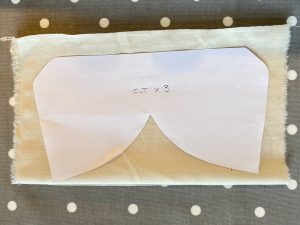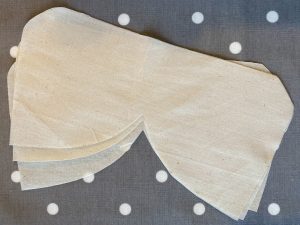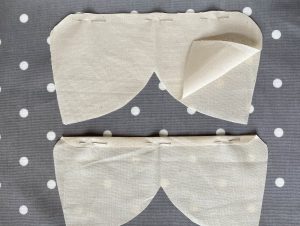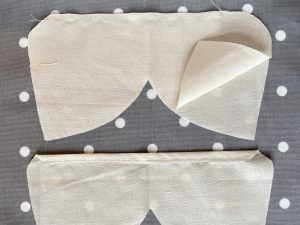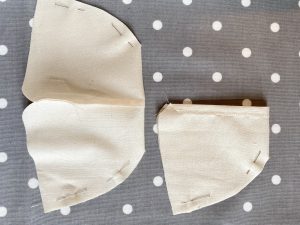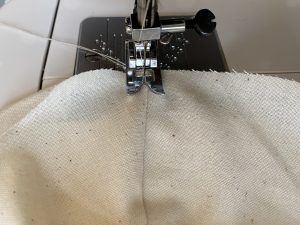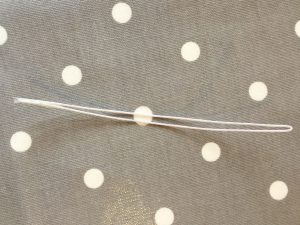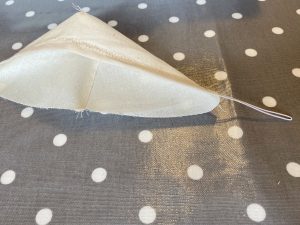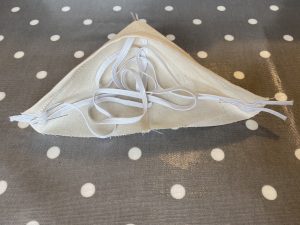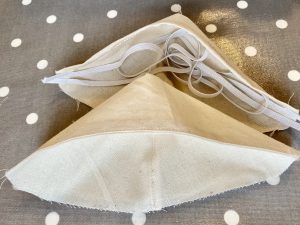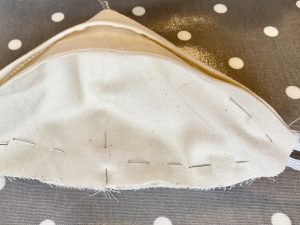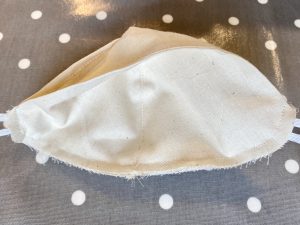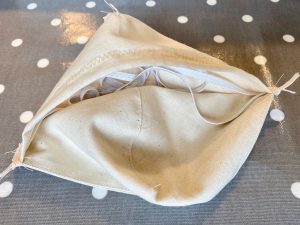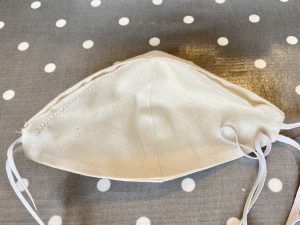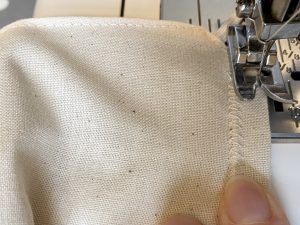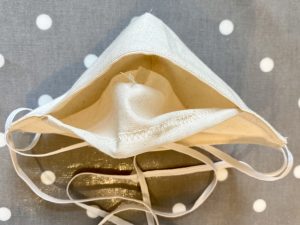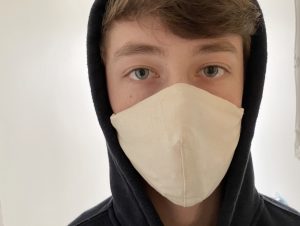Drawstring Bag Shopping List:
- 3 Metres of 150cm wide cotton fabric will make 4 or 5 bags.
- Cotton tape for the ties (3 metres per bag) Or… you could make these out of scrap fabric.
- Matching cotton thread
Cutting out:
- Cut two rectangles 75cm x 70cm per drawstring bag. Or… for the smaller size, cut two rectangles 60cm x 55cm per drawstring bag. The larger bags are preferable.
- Cut two 1.5 metre lengths of cotton tape per drawstring bag. Or… cut two lengths of fabric 6cm x 150cm
Making Up:
- The seam allowance is 1cm.
- The sides of the drawstring bag are 75cm / 60cm
- The top/bottom of the drawstring bag is 70cm / 55cm
- Make sure all the unfinished edges are finished with a zigzag stitch or an overlocker, if you have one.
- Pin the two rectangles right sides together.
- On one of the rectangles… mark the sides 6cm down from what will be the top of the bag, then mark 2cm down from that. You should end up with two marks each side.
- Leaving a gap between the two marks, stitch down both sides, seaming the back and front of the bag together.Leave the bottom open for now…
- Press these seams open and then from the right side, top-stitch either side of the seam to hold the seam allowance back.
- Now stitch the bottom seam and press. You can finish it like a french seam on the outside if you like
- We now need to hem the top of the bag to make a channel for the ties.
- Turn over and press the top edge by 1cm first and then another 4cm. The gap/holes you’ve left in the side seams should end up on the outside/right-side of the bag and in the middle of the folded back channel.
- Top-stitch this double fold down close to the edge and then top-stitch round the top edge for added strength.
- Using a safety pin, pass one length of the cotton tape in a hole at the side, all the way around the channel at top of the bag and out of the same hole. Tie the two ends in a knot.
- Do the same with the other length of cotton tape starting and finishing on the opposite side.
If you are making your own ties…
- Cut two lengths of fabric 5cm x 150cm
- Press the two short edges in by 1cm
- Press long edges in by 1cm so they almost meet in the middle and then press in half lengthways.
- Top-stitch all the way around the edges of this tie to make it nice and flat and strong.
IF YOU NEED ANY HELP PLEASE CONTACT ME…
https://www.sewschool.co.uk/contact-helen
GREAT STOCKIST FOR MATERIALS…
https://www.fabricland.co.uk/product/budget-cotton-tape-2-5cm-wide/
https://www.fabricland.co.uk/product/calico-fabric-300cm-wide/





